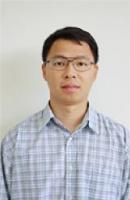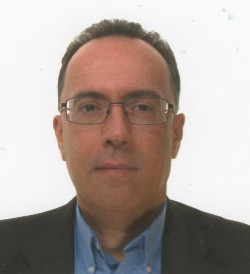



Abstract In this talk, I will present a recent development of the method for realizing complex nanostructures by using solid-source molecular beam epitaxy. Possible applications of these nanostructures in the field of both classical and quantum opto-electronic devices are introduced. By the aid of self-assembled growth, zero-dimensional nanostructure named as quantum dot (QD) can be fabricated. This QD structure has been proposed for many novel applications since it possesses unique carrier confinement properties. In our works, several compound semiconductors (InAs, GaSb and InSb) are selected and they are grown at various growth conditions on different substrates (GaAs, GaSb, InAs and Ge) in order to investigate the possible range of complex nanostructure realization. Density, size, shape and emission wavelength of realized nanostructures are our interesting structural and optical properties. Based on the experimental results, linkages between the structure and the optical properties are given. This work enhances the understanding of complex nanostructures in both fundamental and applied aspects.
Acknowledgement : This work is financially supported by Research Chair Grant, the National Science and Technology Development Agency (NSTDA), Thailand (FDA-CO-2558-1407-TH), Asian Office of Aerospace Research and Development (AOARD) Grant, co-funded with Office of Naval Research Global (ONRG), under Grant no. FA 2386-16-1-4003. I thank the academic staff and student members of semiconductor device research laboratory (SDRL), Department of Electrical Engineering, Faculty of Engineering, Chulalongkorn University, Bangkok, Thailand.
Suwit Kiravittaya was born in Bangkok, Thailand. He received both bachelor and doctoral degrees in Electrical Engineering from Chulalongkorn University in 1998 and 2003, respectively. In 2003–2008, he worked as a postdoc and scientist at Max-Planck Institute for Solid State Research, Stuttgart. In 2009–2011, he continued the work as a scientist in Institute for Integrative Nanosciences in Leibniz Institute for Solid State and Materials Research (IFW-Dresden), Dresden, Germany. He is currently a Lecturer in the Department of Electrical and Computer Engineering, Faculty of Engineering, Naresuan University, Phitsanulok, Thailand. He is an author and co-author of more than 100 research papers published in international journals/conferences. His area of expertise includes theoretical and experimental epitaxial growth, fabrication of micro- and nanostructures, experimental photonic research, and numerical simulation of micro- and nanodevices for photonic applications.


Prof. Diego Bellan received the M.Sc. and the Ph.D. degrees in Electrical Engineering from the Politecnico di Milano, Milan, Italy, in 1994 and 1999, respectively. He is currently an Assistant Professor of Advanced Circuit Theory with the Department of Electronics, Information and Bioengineering, Politecnico di Milano. His research interests are in the fields of electromagnetic compatibility (EMC), power quality, and analog-to-digital conversion of signals. He was involved in the staff of several funded research projects, concerning EMC in the space sector (European Space Agency) and in the railway sector (Trenitalia S.p.A.), and projects supported by the Italian Ministry of University and Research. He was also the principal investigator of several funded research activities concerning electromagnetic modelling of electromechanical devices. He published more than 100 papers in international journals and conference proceedings. He is a member of the Editorial Board of The Open Electrical & Electronic Engineering Journal. He serves as reviewer for several IEEE Transactions and other international journals.
Abstract Symmetrical components transformation is the most common tool for the phasor-domain analysis of three-phase power systems under steady state conditions. The main assumption underlying such approach is the symmetry of three-phase loads and lines (i.e., three equal phases with equal coupling coefficients, if any). In fact, under such assumption the symmetrical components transformation decouples the sequence circuits allowing a much easier and straightforward analysis. If the symmetry assumption is not met, the transformation results in coupled sequence circuits. This is an important issue because asymmetry is a feature of modern power systems for several reasons. For example, single-phase loads drawing significant electrical power, and asymmetrical geometric arrangement (e.g., incomplete transposition) of overhead transmission lines. Asymmetry can be found also in three-phase power drive systems when parasitic components or filter components affected by tolerance are considered.
Derivation of rigorous circuit representations of coupling between sequence circuits due to system asymmetries will be shown. When the complexity of the system under analysis increases, however, the proposed circuit representations of asymmetries lead to a complete equivalent circuit whose solution can result in a hard task. Therefore, approximate circuit representations of coupling between sequence circuits are derived, based on the assumption of weak coupling.
Three specific applications of the approximate circuit representations will be shown. First, the analysis of voltage unbalance emission due to untransposed lines, and its propagation within a complex power system. Second, the case of interconnected three-wire lines where, in case of line asymmetry, a zero-sequence current can circulate within the loop involving such asymmetrical line. Third, the transformation of differential mode to common mode noise in a three-phase motor drive system due to slight asymmetry (i.e., tolerance) of the filter components.

Hosted by

Sponsored by
